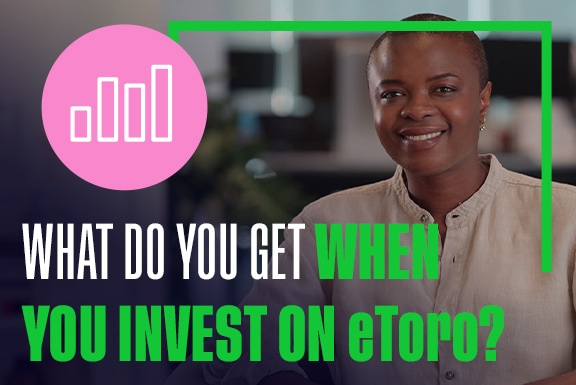Description
Transcript
Hi there.
In the previous video we talked about the safeguarding of your funds and investments with eToro, and the measures we take to keep it that way.
Now, let’s answer a few more common questions.
[What do I purchase when I buy assets on eToro?]
eToro provides you with a few purchasing options.
The first one is buying a non-leveraged asset, AKA opening a long position.
You’re free to keep it open for as long as you want and there’s no need to determine a Stop Loss or Take Profit.
If you didn’t know, a Stop Loss is an instruction to automatically close a position if it reaches a certain rate or amount.
In other words, it’s a risk management tool, which is usually mandatory, except, like we said, if you’re holding an underlying asset.
A Take Profit on the other hand closes a position at a specific rate in your favor, which is to say it’s a way to make sure your profit is realized before it has a chance to fall back down.
Another purchase option is to use Leverage, a strategy in which you use certain derivative financial instruments to open a position with a larger exposure to the market, but a smaller amount of invested capital.
Naturally, if the investment goes well, it increases your potential return.
On the other hand, it can also magnify losses, making it a riskier option.
When using leverage, take into account that by regulation you will automatically have a 50% Stop Loss and you will need to set a Take Profit.
And finally, you can open a cell position, which you might also know as ‘short-selling’ or ‘going short’, which is used to make profits when the markets are falling or as a hedging tool.
On eToro this is done using a CFD.
[How can I know if I’m holding the underlying asset or a CFD?]
That’s easy.
Simply open your portfolio.
Next to each of your investments, you’ll find a tag specifying whether it’s a real asset or CFD.
You can also see which type it is in your account statement.
[What are the benefits of holding the underlying asset on eToro?]
The answer to that is short and sweet.
No overnight or over the weekend charges, as well as voting rights for US stocks.
[In case of bankruptcy, is there a difference between holding an underlying asset and a CFD?]
Like we said in the previous video, eToro is very unlikely to go bankrupt.
However, if that were to happen, your money is kept separately from that of the company.
So whether you’re buying an underlying asset or a CFD, we make sure your money is safe, to the very last dime.
Thanks for watching, and see you on eToro.

